
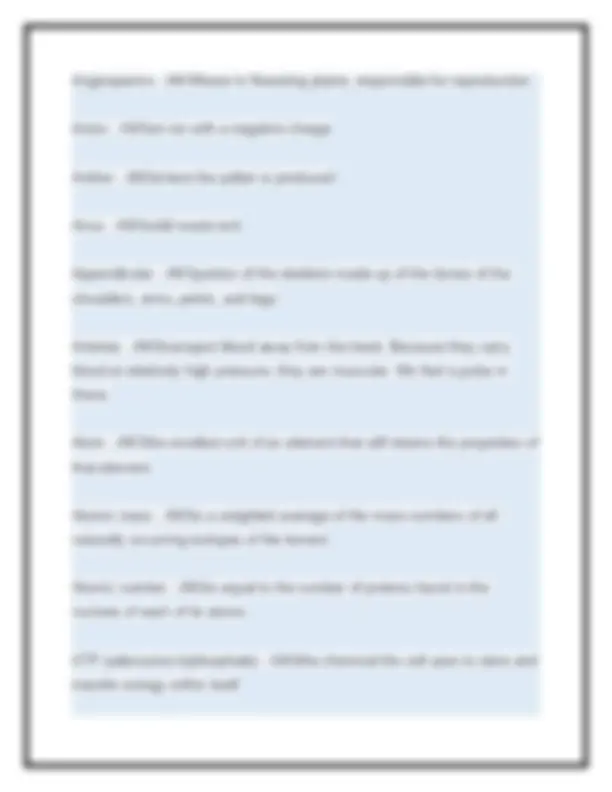

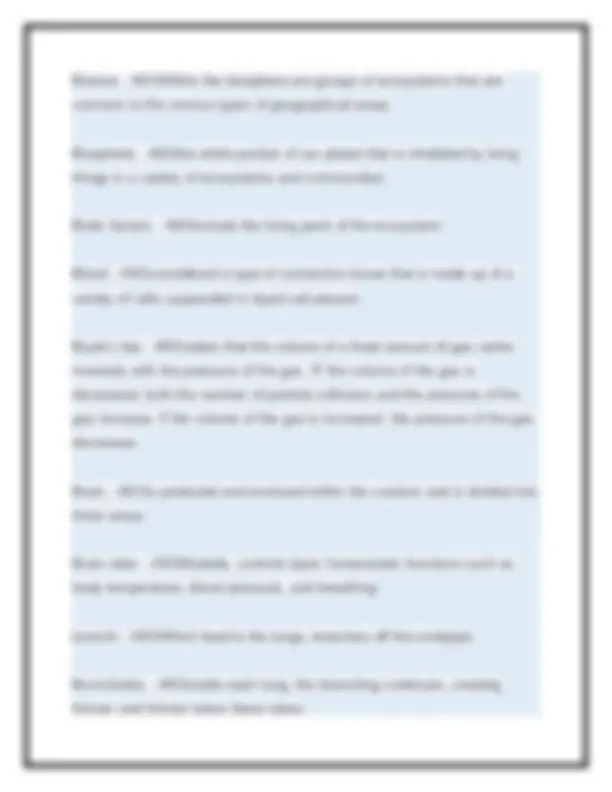
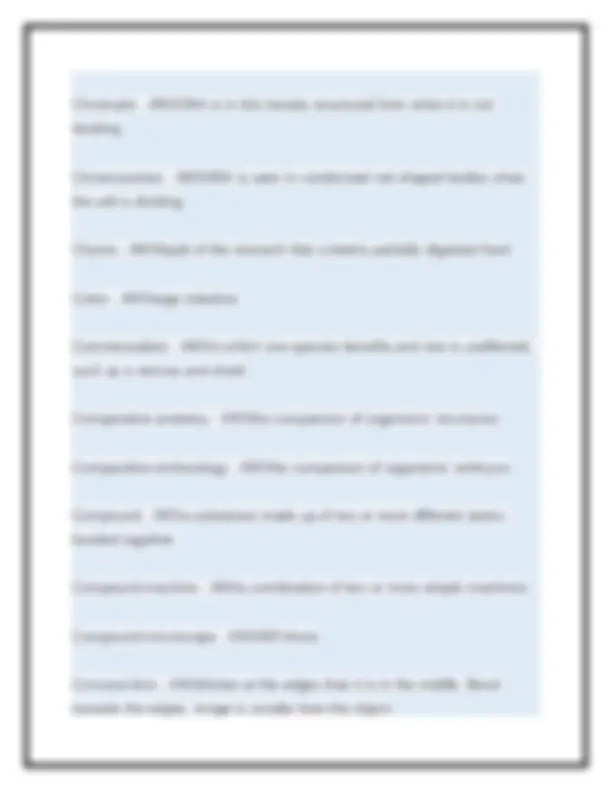
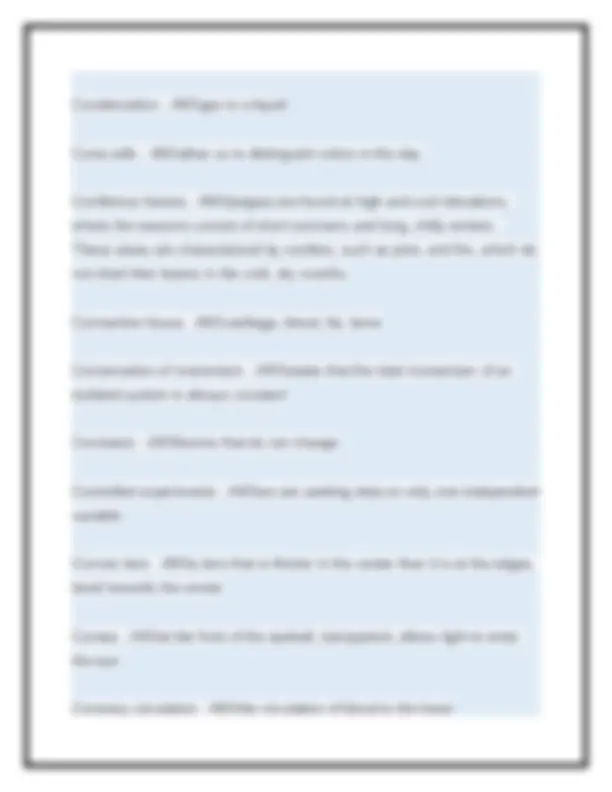
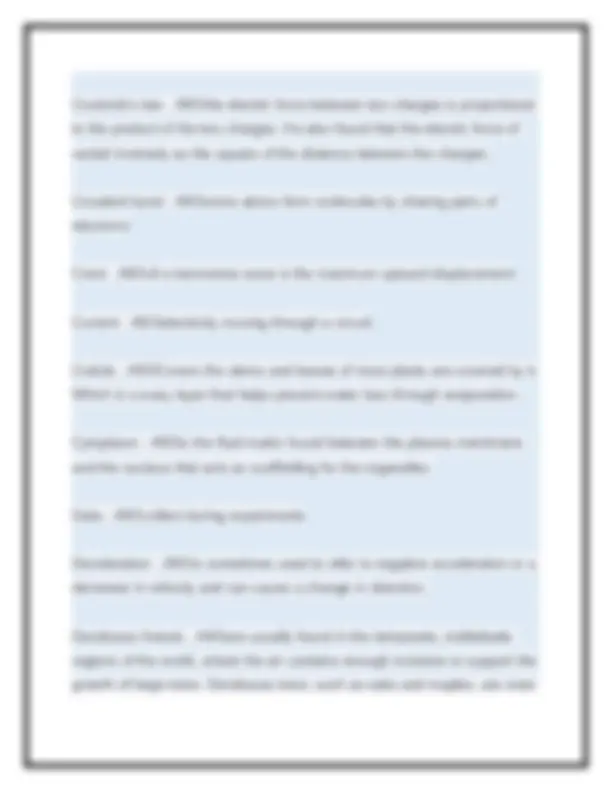
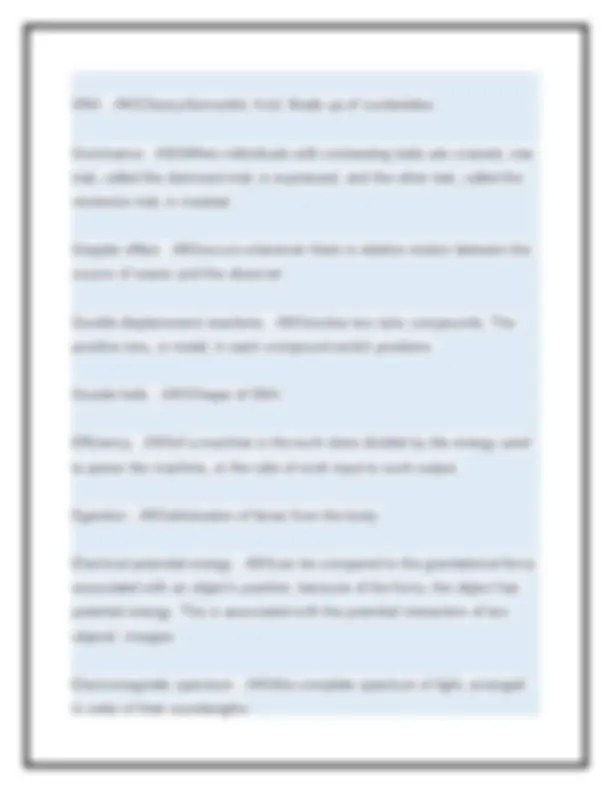
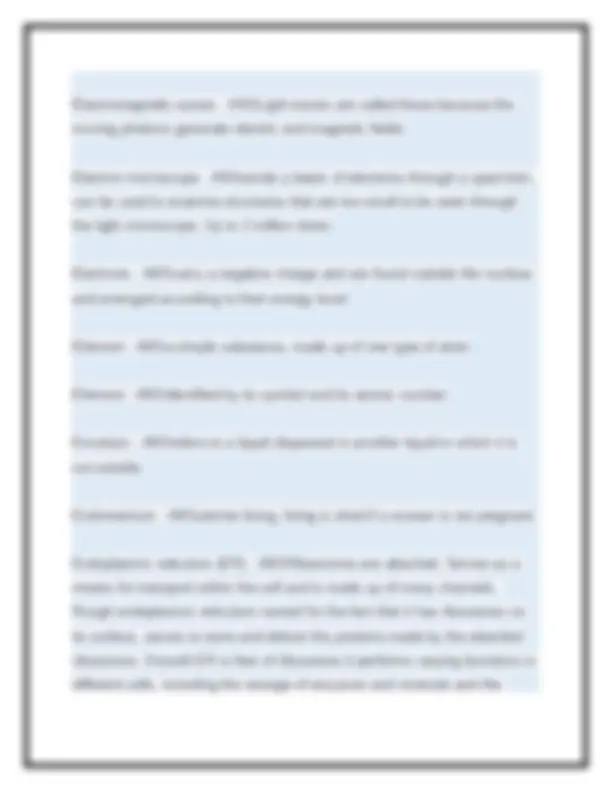
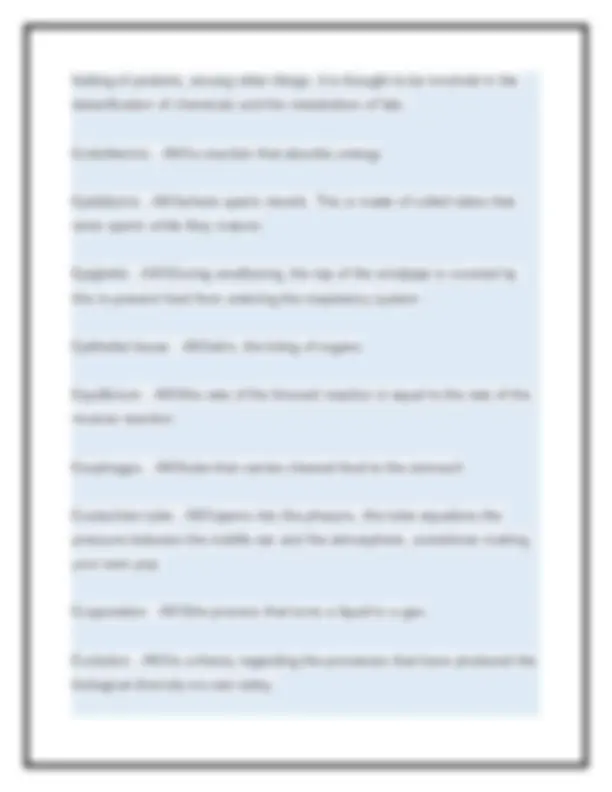
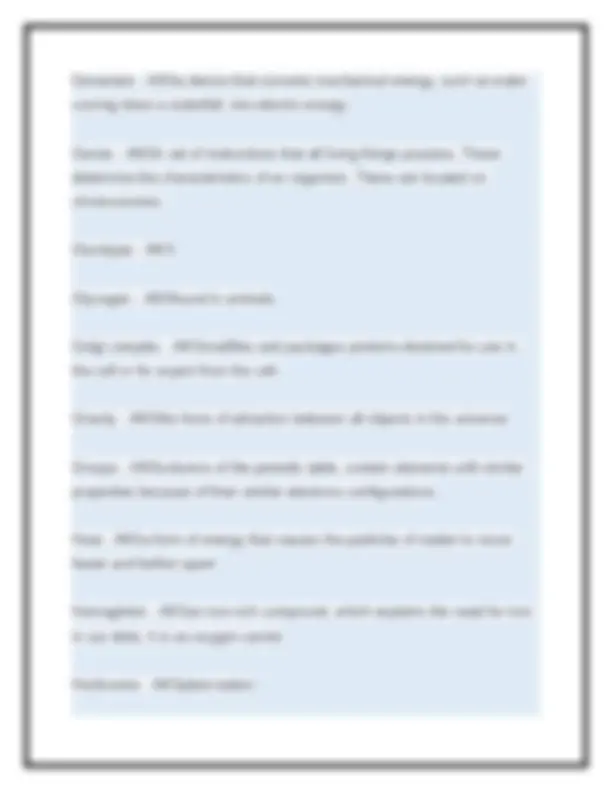
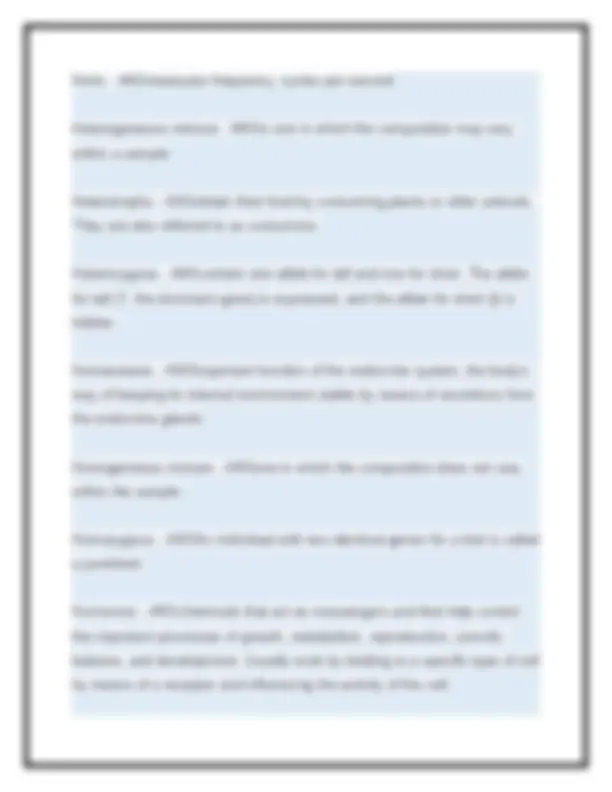
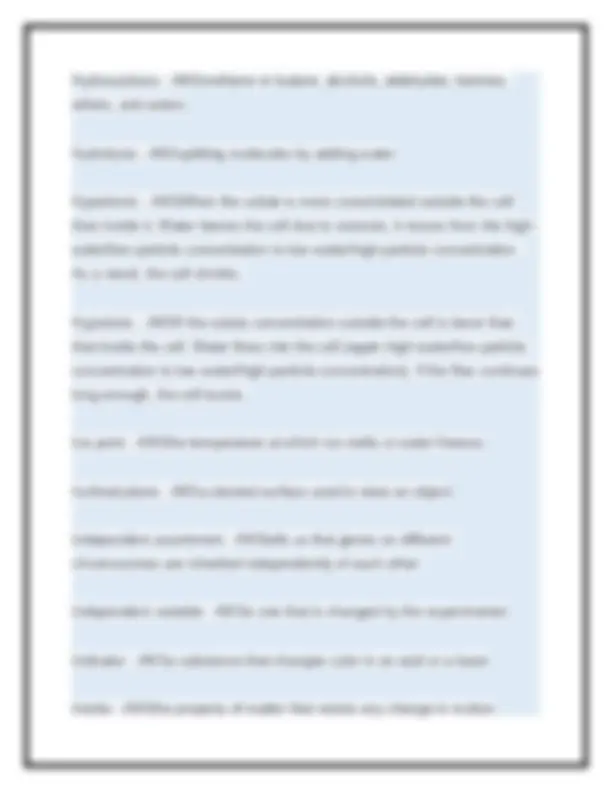
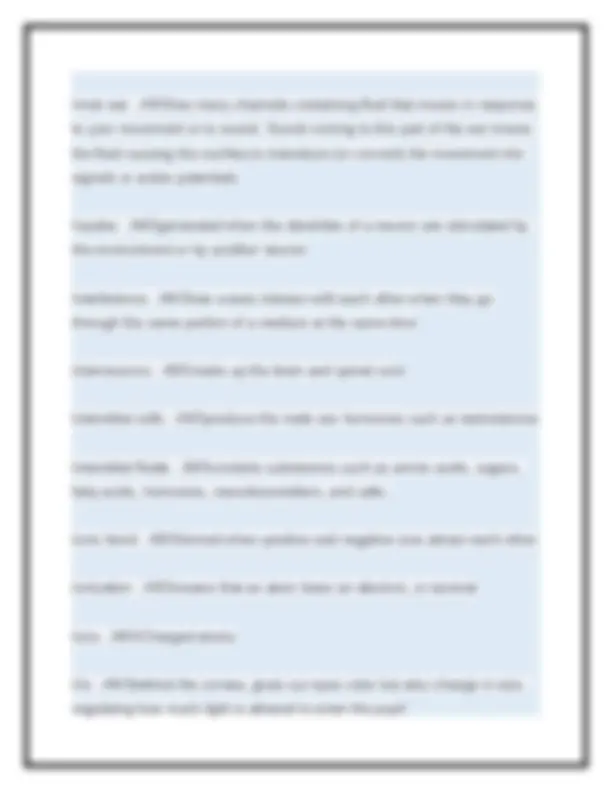
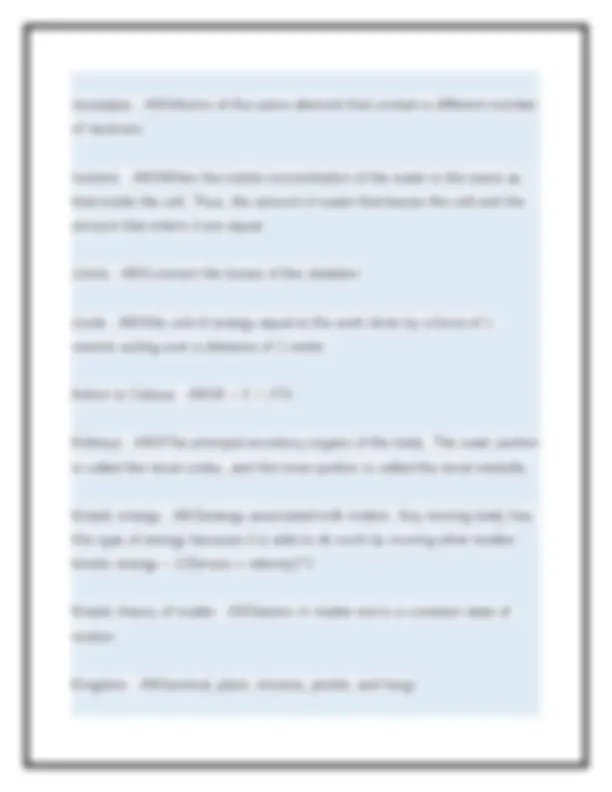
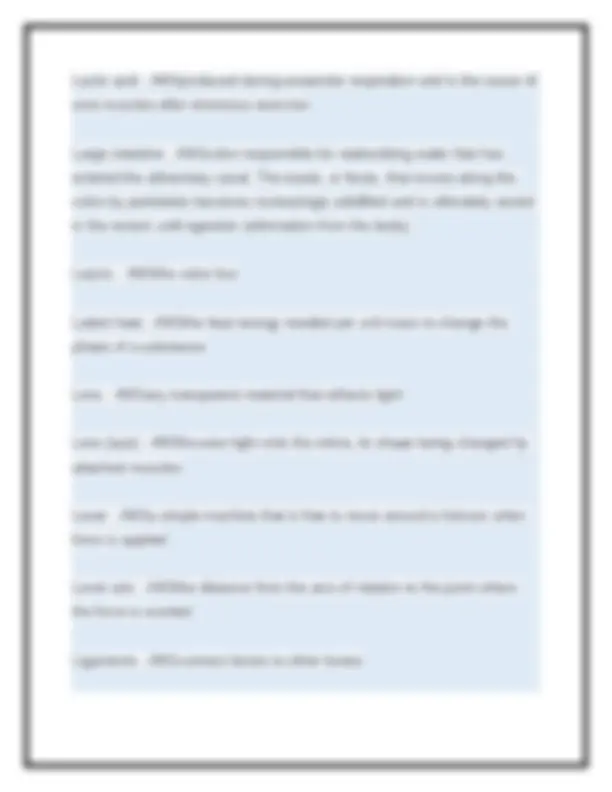
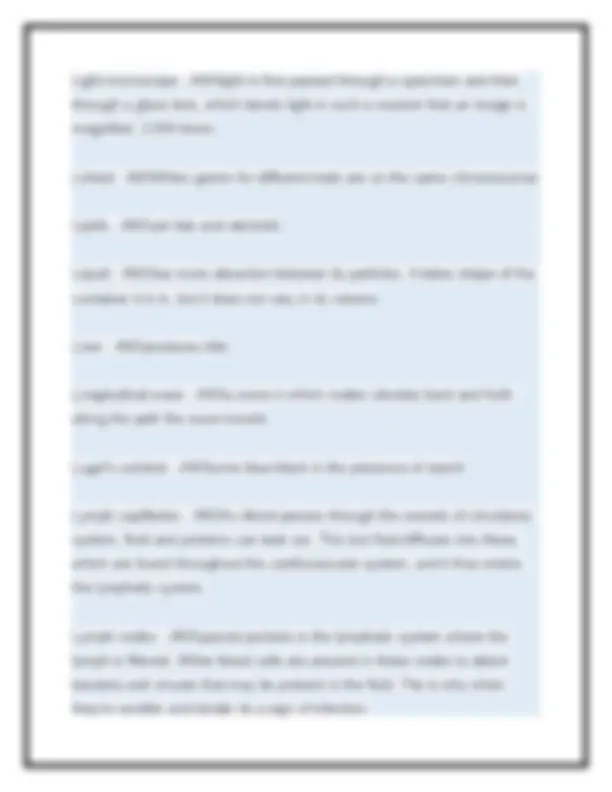
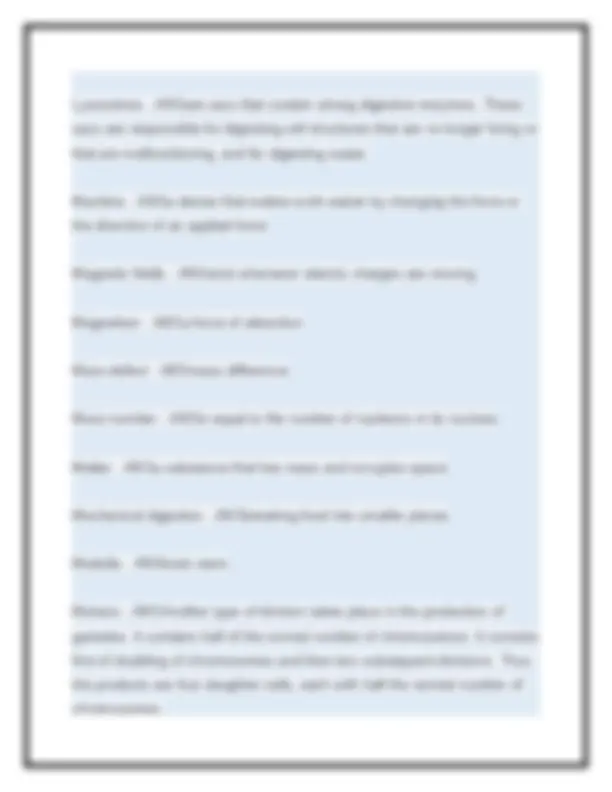
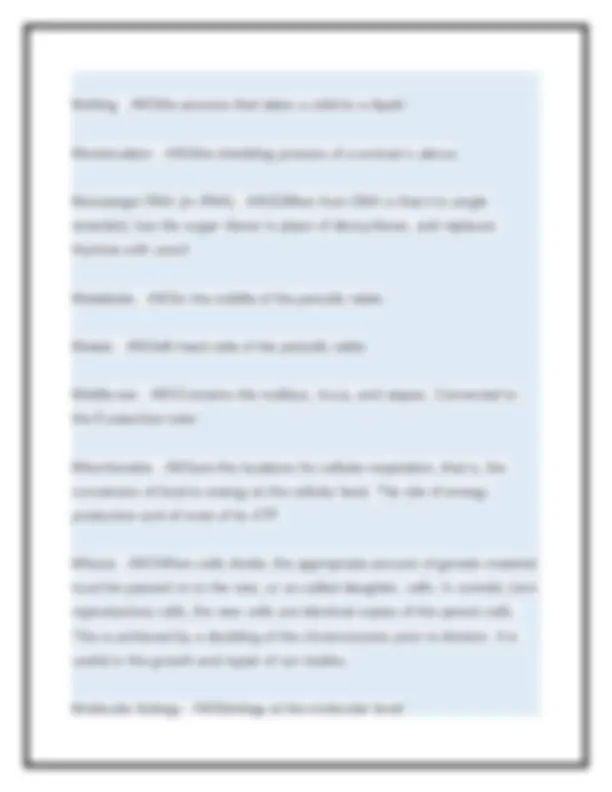
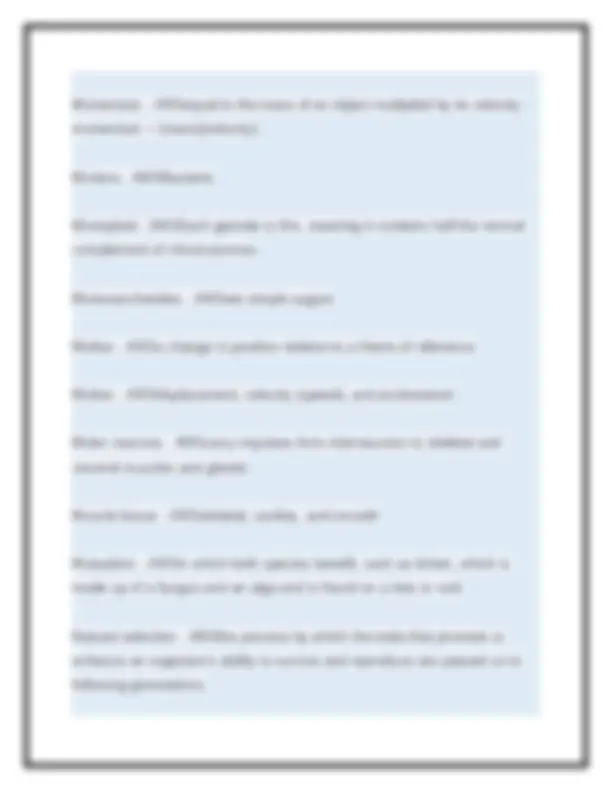
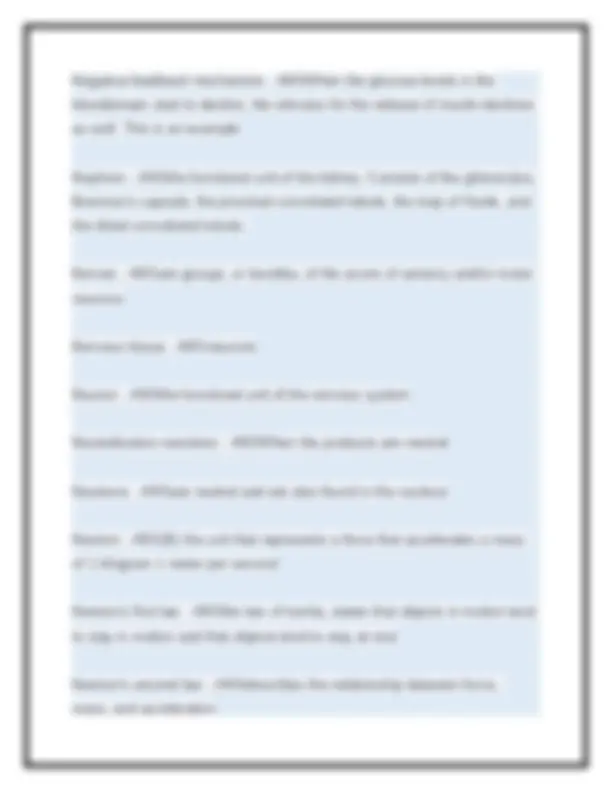


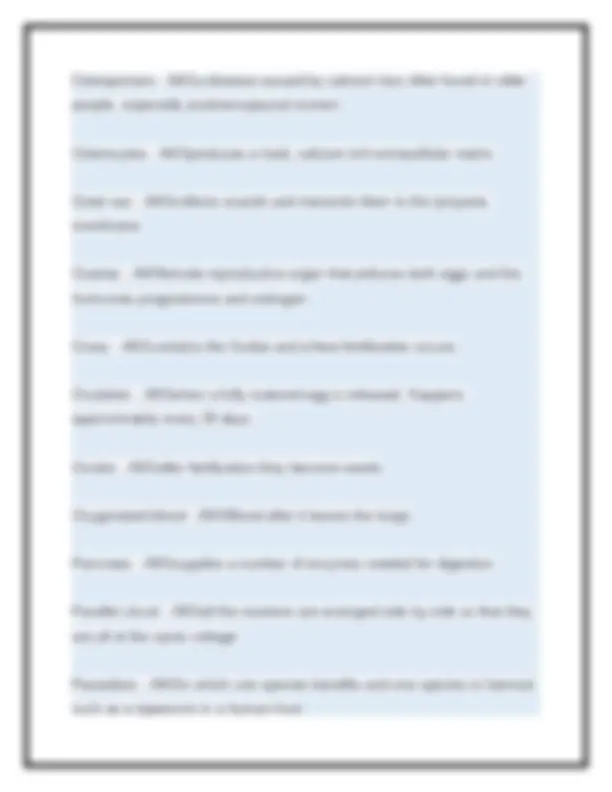
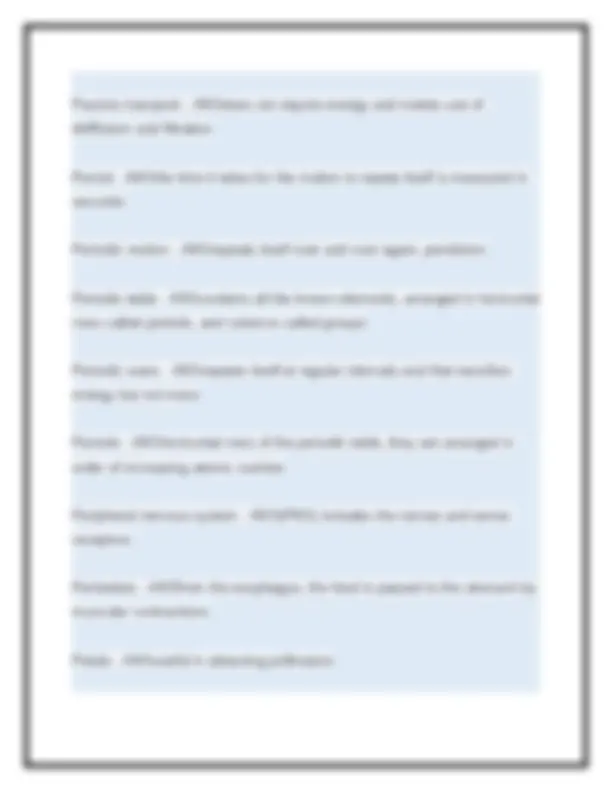
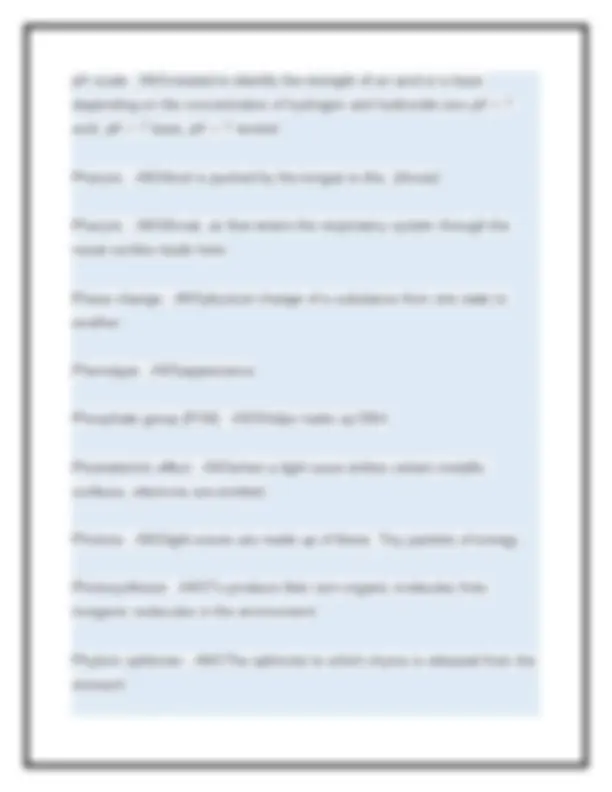
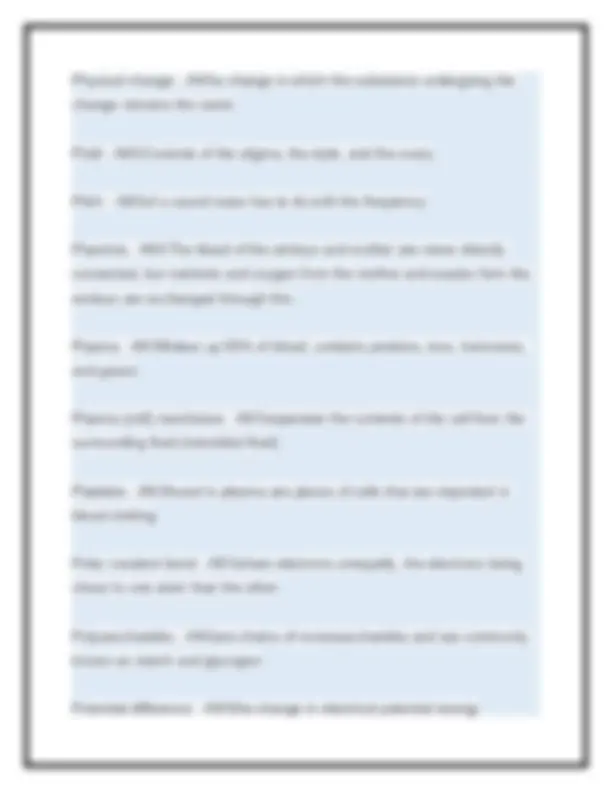
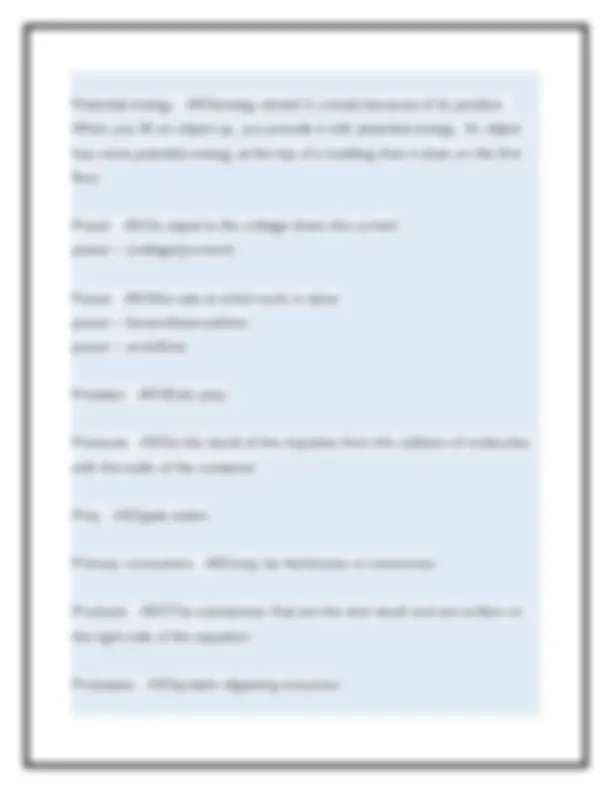

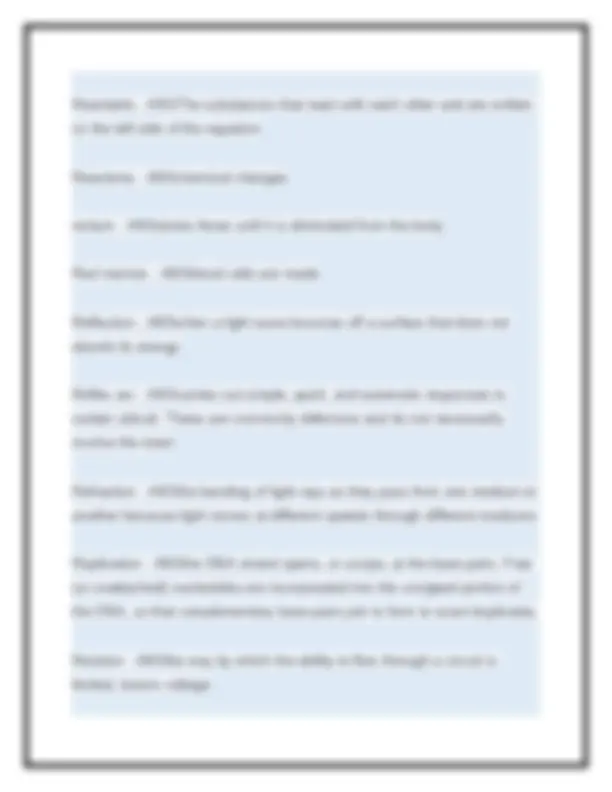
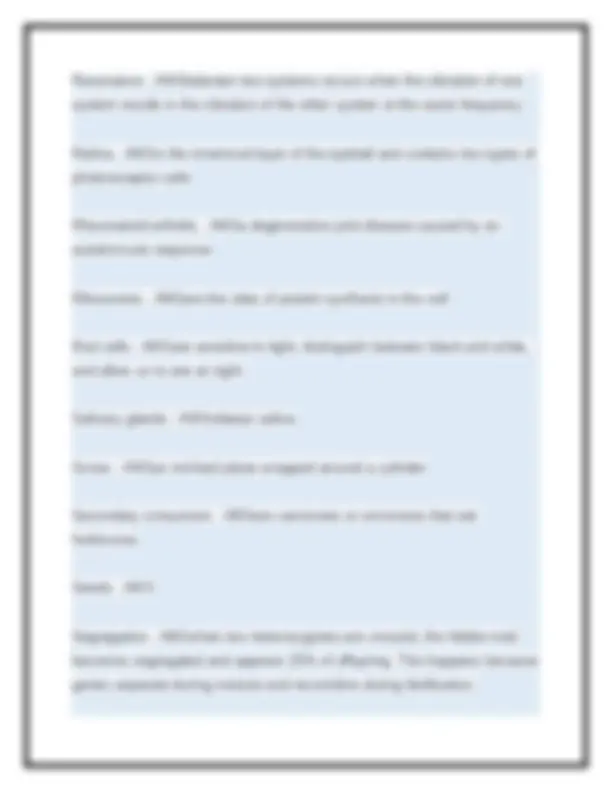
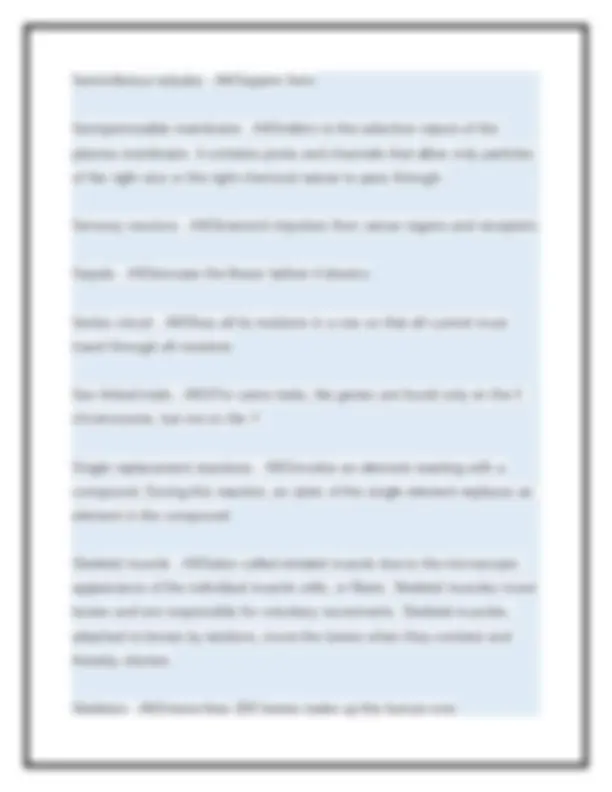

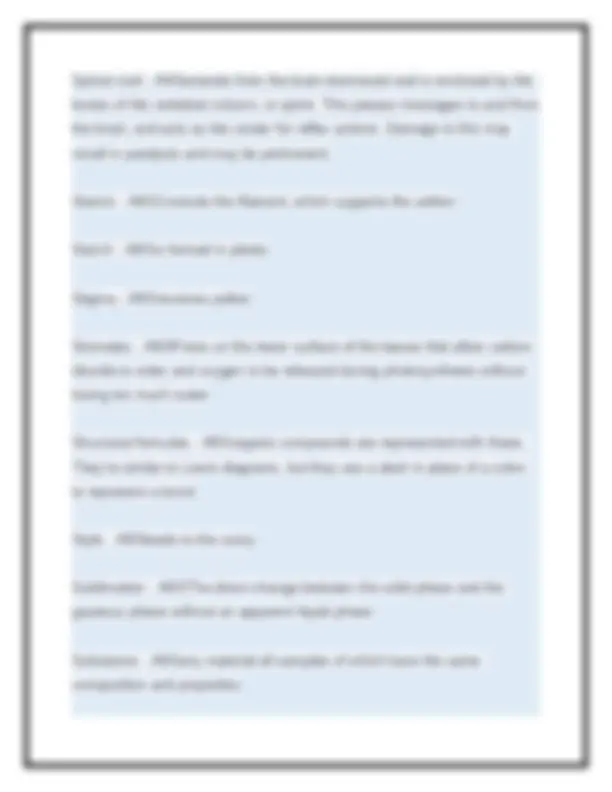
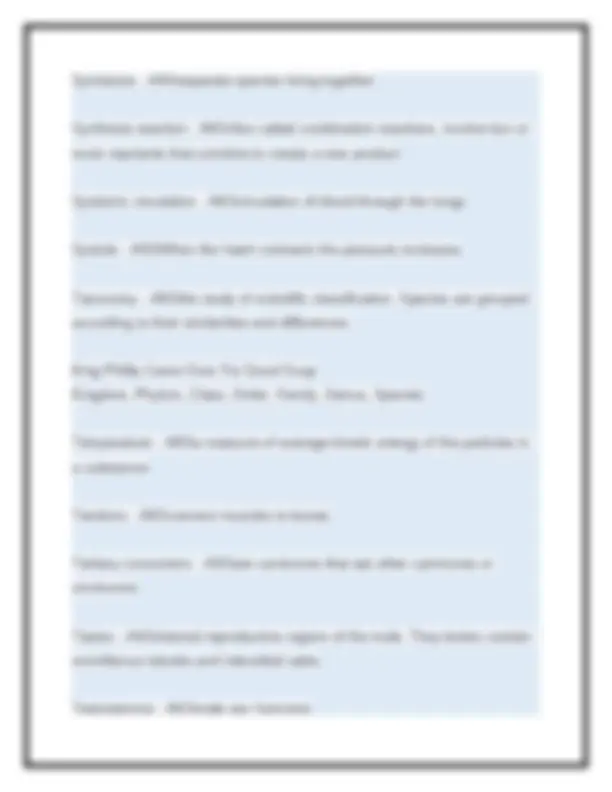
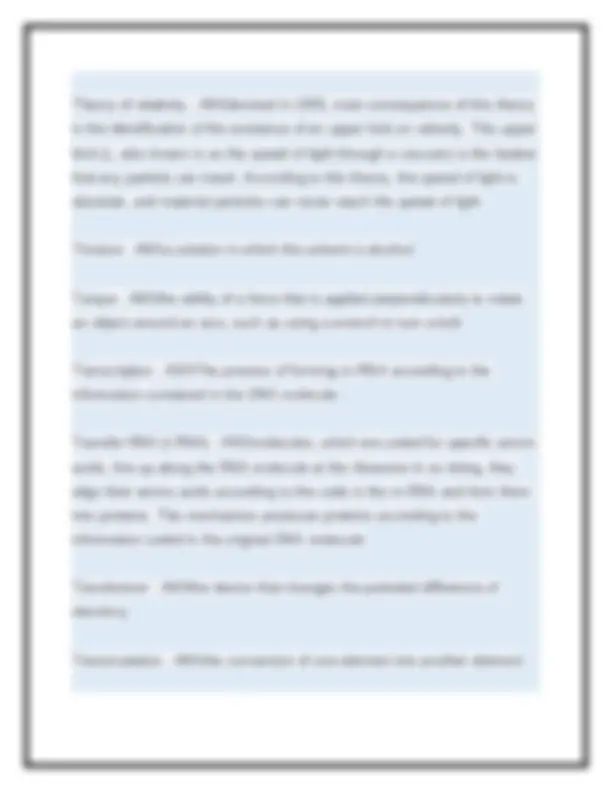
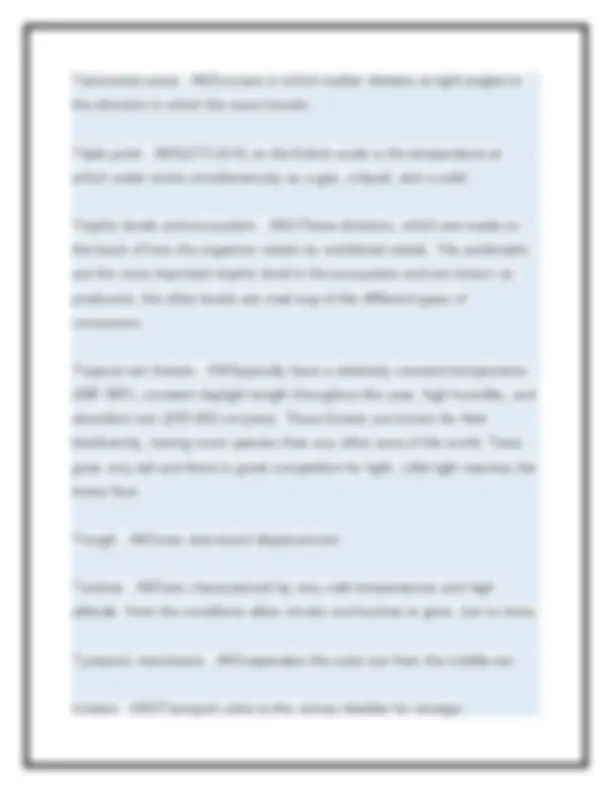
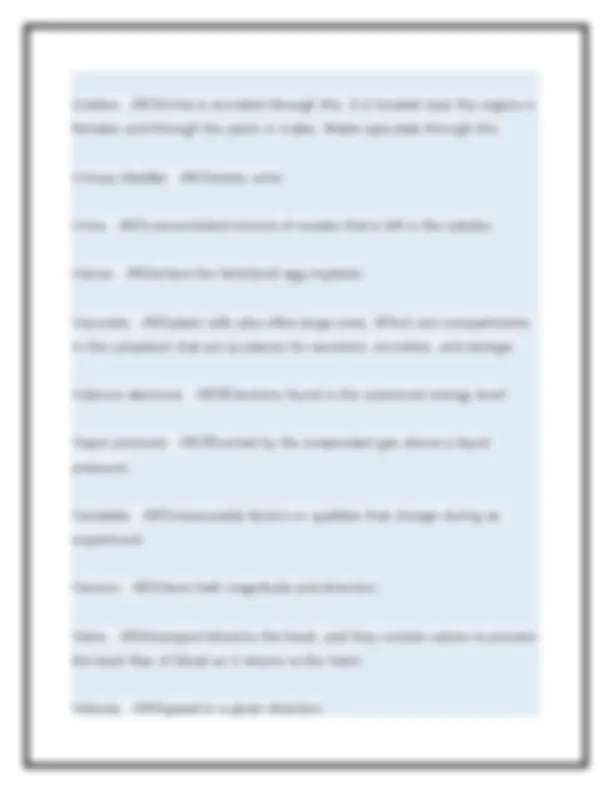
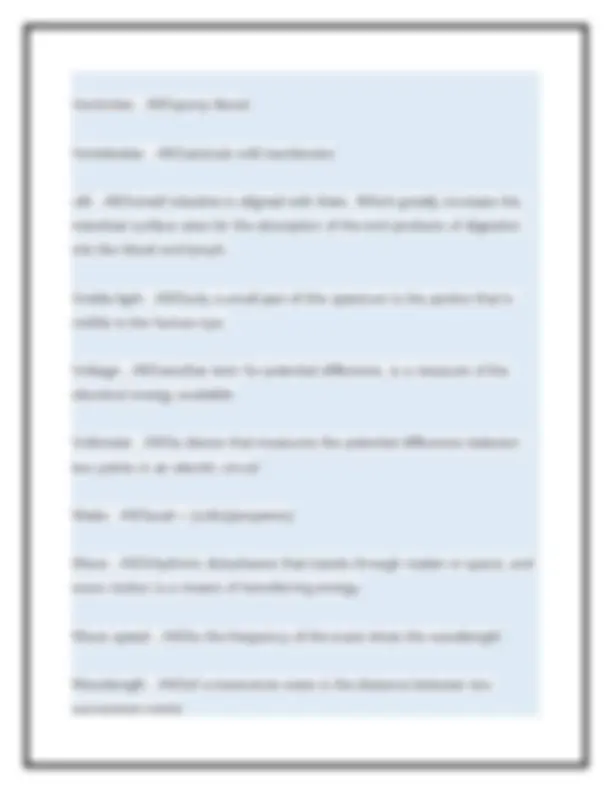



Study with the several resources on Docsity

Earn points by helping other students or get them with a premium plan


Prepare for your exams
Study with the several resources on Docsity

Earn points to download
Earn points by helping other students or get them with a premium plan
Community
Ask the community for help and clear up your study doubts
Discover the best universities in your country according to Docsity users
Free resources
Download our free guides on studying techniques, anxiety management strategies, and thesis advice from Docsity tutors
NLN-PAX Science Test Bank Questions and Correct Answers Latest Edition 2025-2026 Rated A
Typology: Exams
1 / 47

This page cannot be seen from the preview
Don't miss anything!








































Abiotic factors - ANSnonliving influences, such as temperature, humidity, or soil composition. Absolute zero - ANSzero Kelvin (0K) Acceleration - ANSrefers to any change of velocity, either positive or negative acceleration = (final velocity - original velocity)/time Acid - ANS(H+) Activation energy - ANSenergy that has to be available for a reaction to take place Active transport - ANSinvolves the use of energy in the form of ATP to move substances across the membrane Adaptation - ANSFor natural selection to occur, organisms must have variations, some of which give the individuals having them an advantage in the struggle for survival. The struggle for survival occurs because each generation of a species produces more offspring than can survive. In this
struggle, the individuals best suited to their environment survive ("survival of the fittest") and pass on the traits to their offspring Aerobic respiration - ANSrespiration occurs when oxygen is present, and it is the opposite process to that of photosynthesis. Alimentary canal - ANSHumans have a digestive system that is composed of a tube that extends between two openings the mouth and the anus. Alleles - ANSGenes are found in pairs Alveolus - ANSAir sac at the end of each bronchiole Ammeter - ANSa device that measures the current going through any specific point on the circuit Ampere - ANSthe unit used to measure electrical current Amplitude - ANSmaximum distance a wave rises or fallss as it travels Amylase - ANScontained in saliva, breaks down starch into smaller carbohydrate molecules (monosaccharides and disaccharides) Anaerobic respiration - ANSrespiration that occurs when oxygen is not present. This produces a lower amount of ATP. This respiration is less efficient.
Atria - ANSreceive blood Atrioventricular valve - ANSthe valve from which blood flows from the right atrium to the right ventricle Autonomic branch - ANSis concerned with the internal environment Autosomes - ANSNonsex chromosomes. Humans have 22 Autotrophs - ANSare organisms that produce their own food from inorganic substances. Plants are these. Axial - ANSportion of the skeleton consists of the skull, vertebrae, ribs, and sternum Axon terminals - ANSends of a neuron Base - ANS(OH-) Benedict's solution - ANSa test used for monosaccharides, which when heated with a simple sugar, turns brick rid Bile - ANSproduced by the liver and stored by the gallbladder helps in the breakdown of fats Biogeography - ANSthe geographical distribution of plants and animals
Biomes - ANSWithin the biosphere are groups of ecosystems that are common to the various types of geographical areas. Biosphere - ANSthe entire portion of our planet that is inhabited by living things in a variety of ecosystems and communities Biotic factors - ANSinclude the living parts of the ecosystem Blood - ANSconsidered a type of connective tissue that is made up of a variety of cells suspended in liquid call plasma Boyle's law - ANSstates that the volume of a fixed amount of gas varies inversely with the pressure of the gas. IF the volume of the gas is decreased, both the number of particle collisions and the pressure of the gas increase. If the volume of the gas is increased, the pressure of the gas decreases. Brain - ANSis protected and enclosed within the cranium and is divided into three areas Brain stem - ANSMedulla, controls basic homeostatic functions such as body temperature, blood pressure, and breathing bronchi - ANSWhich lead to the lungs, branches off the windpipe Bronchioles - ANSinside each lung, the branching continues, creating thinner and thinner tubes these tubes
Cerebellum - ANSlocated below and behind the cerebrum. It is responsible for muscular coordination and balance Cerebrum - ANSmakes up the largest portion of the human brain and is the site of complex and high-level thinking. Conscious and voluntary actions are controlled here, as are other functions such as speech, vision, hearing, and memory. Charles' law - ANSthe relationship between the temperature and volume of a gas. According to this law, the volume of a fixed amount of gas varies directly with its temperature. If the temperature of a gas increases, the volume increases Chemical change - ANSwhen a substance changes into a new and different substance Chemical digestion - ANSbreaking nutrients into small molecules Chlorophyll - ANSPigment in plant cells that absorb light energy. This energy drives the synthesis of food molecules. Chloroplasts - ANScontain chlorophyll, which is necessary for photosynthesis. Chochlea - ANSpart of the inner ear that transduces movement into signals or action potentials
Chromatin - ANSDNA is in this loosely structured form when it is not dividing Chromosomes - ANSDNA is seen in condensed rod-shaped bodies when the cell is dividing Chyme - ANSliquid of the stomach that contains partially digested food Colon - ANSlarge intestine Commensalism - ANSin which one species benefits and one is unaffected, such as a remora and shark Comparative anatomy - ANSthe comparison of organisms' structures Comparative embryology - ANSthe comparison of organisms' embryos Compound - ANSa substance made up of two or more different atoms bonded together. Compound machine - ANSa combination of two or more simple machines Compound microscope - ANS400 times Concave lens - ANSthicker at the edges than it is in the middle. Bend towards the edges, image is smaller than the object
Coulomb's law - ANSthe electric force between two charges is proportional to the product of the two charges. He also found that the electric force of varied inversely as the square of the distance between the charges Covalent bond - ANSsome atoms form molecules by sharing pairs of electrons Crest - ANSof a transverse wave is the maximum upward displacement Current - ANSelectricity moving through a circuit Cuticle - ANSCovers the stems and leaves of most plants are covered by it. Which is a waxy layer that helps prevent water loss through evaporation. Cytoplasm - ANSis the fluid matrix found between the plasma membrane and the nucleus that acts as scaffolding for the organelles. Data - ANScollect during experiments Deceleration - ANSis sometimes used to refer to negative acceleration or a decrease in velocity and can cause a change in direction, Deciduous forests - ANSare usually found in the temperate, midlatitude regions of the world, where the air contains enough moisture to support the growth of large trees. Deciduous tress, such as oaks and maples, are ones
that drop their leaves during the dry months. The temperatures in this biome can range widely from season to season. Decomposers - ANSAn important role in an ecosystem is played by organisms such as bacteria and fungi, which consume nonliving organic material and release inorganic material. Thus material is recycled through the ecosystem, and inorganic material is made available to the plants. Decomposition reactions - ANSinvolve one reactant that is broken down into two or more simpler products Dehydration synthesis - ANSa reaction in which small units, such as monosaccharides or amino acids are joined to form larger molecules Density - ANSA way to compare substances in terms of heaviness so that they are comparable, mass/volume Deoxygenated blood - ANSthe blood that is in the pulmonary artery before it reaches the lungs Deoxyribose - ANSfound in DNA Dependent variable - ANSthe variable that changes in response to the independent variable Deserts - ANShave little precipitation and are more arid than all of the other biomes
DNA - ANSDeoxyribonucleic Acid. Made up of nucleotides Dominance - ANSWhen individuals with contrasting traits are crossed, one trait, called the dominant trait, is expressed, and the other trait, called the recessive trait, is masked. Doppler effect - ANSoccurs whenever there is relative motion between the source of waves and the observer Double displacement reactions - ANSinvolve two ionic compounds. The positive ions, or metal, in each compound switch positions. Double helix - ANSShape of DNA Efficiency - ANSof a machine is the work done divided by the energy used to power the machine, or the ratio of work input to work output. Egestion - ANSelimination of feces from the body Electrical potential energy - ANScan be compared to the gravitational force associated with an object's position; because of the force, the object has potential energy. This is associated with the potential interaction of two objects' charges Electromagnetic spectrum - ANSthe complete spectrum of light, arranged in order of their wavelengths
Electromagnetic waves - ANSLight waves are called these because the moving photons generate electric and magnetic fields Electron microscope - ANSsends a beam of electrons through a specimen, can be used to examine structures that are too small to be seen through the light microscope. Up to 2 million times Electrons - ANScarry a negative charge and are found outside the nucleus and arranged according to their energy level Element - ANSa simple substance, made up of one type of atom Element - ANSidentified by its symbol and its atomic number Emulsion - ANSrefers to a liquid dispersed in another liquid in which it is not soluble Endometrium - ANSuterine lining, lining is shed if a woman is not pregnant Endoplasmic reticulum (ER) - ANSRibosomes are attached. Serves as a means for transport within the cell and is made up of many channels. Rough endoplasmic reticulum named for the fact that it has ribosomes on its surface, serves to store and deliver the proteins made by the attached ribosomes. Smooth ER is free of ribosomes it performs varying functions in different cells, including the storage of enzymes and minerals and the
Exothermic - ANSreactions that release energy Extensor - ANSReturns the limb to the anatomical position Fahrenheit to Celsius - ANSF = (9/3C) + 32 Fallopian tubes - ANSwhere the egg travels when released, this is where fertilization can occur Fetus - ANSdeveloping baby Filament - ANSSupport the anther Filtration - ANSthe movement of water and solutes through the membrane by fluid, or hydrostatic, pressure. Fission - ANSa heavy nucleus splits into two main pieces with the release of a huge amount of energy Flexor - ANSbends or moves a limb away from anatomical position Focal point - ANSthe point at which the light rays meet Food chain - ANSThe path along which food is transferred from level to level. Food web - ANSThe interrelationship of many food chains
Fossil record - ANSconsists of remnants or traces of organisms from past geologic ages. Freezing - ANSliquid to solid Frequency - ANStells us how often a cycle repeats itself in a specific unit time unit Fruit - ANSAfter fertilization, the walls of the ovary thicken to protect the seed Fungi - ANSMolds, muchrooms, yeasts, and the like Fusion - ANSthe nuclei of several light atoms combine to form a single heavy nucleus with a release of energy Gallbladder - ANSstores bile Gametes - ANSsperm and egg Gas - ANSthe attractions between the atoms or molecules are weak, and the particles move around in a random and erratic manner. If placed in a container, a gas takes shape of its container and spreads to fill its volume Gastric juices - ANSmade up of hydrochloric acid and proteases
Hertz - ANSmeasures frequency, cycles per second Heterogeneous mixture - ANSis one in which the composition may vary within a sample Heterotrophs - ANSobtain their food by consuming plants or other animals. They are also referred to as consumers. Heterozygous - ANScontain one allele for tall and one for short. The allele for tall (T, the dominant gene) is expressed, and the allele for short (t) is hidden. Homeostasis - ANSImportant function of the endocrine system, the body's way of keeping its internal environment stable by means of secretions from the endocrine glands Homogeneous mixture - ANSone in which the composition does not vary within the sample Homozygous - ANSAn individual with two identical genes for a trait is called a purebred. Hormones - ANSchemicals that act as messengers and that help control the important processes of growth, metabolism, reproduction, osmotic balance, and development. Usually work by binding to a specific type of cell by means of a receptor and influencing the activity of the cell.
Hydrocarbons - ANSmethane or butane, alcohols, aldehydes, ketones, ethers, and esters Hydrolysis - ANSsplitting molecules by adding water Hypertonic - ANSWhen the solute is more concentrated outside the cell than inside it. Water leaves the cell due to osmosis; it moves from the high- water/low-particle concentration to low-water/high-particle concentration. As a result, the cell shrinks. Hypotonic - ANSIf the solute concentration outside the cell is lower than that inside the cell. Water flows into the cell (again high-water/low-particle concentration to low-water/high-particle concentration). If the flow continues long enough, the cell bursts. Ice point - ANSthe temperature at which ice melts or water freezes Inclined plane - ANSa slanted surface used to raise an object Independent assortment - ANStells us that genes on different chromosomes are inherited independently of each other Independent variable - ANSis one that is changed by the experimenter Indicator - ANSa substance that changes color in an acid or a base Inertia - ANSthe property of matter that resists any change in motion